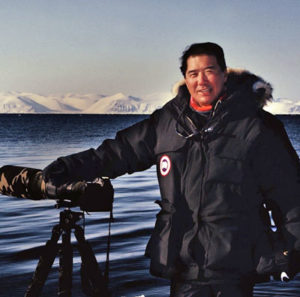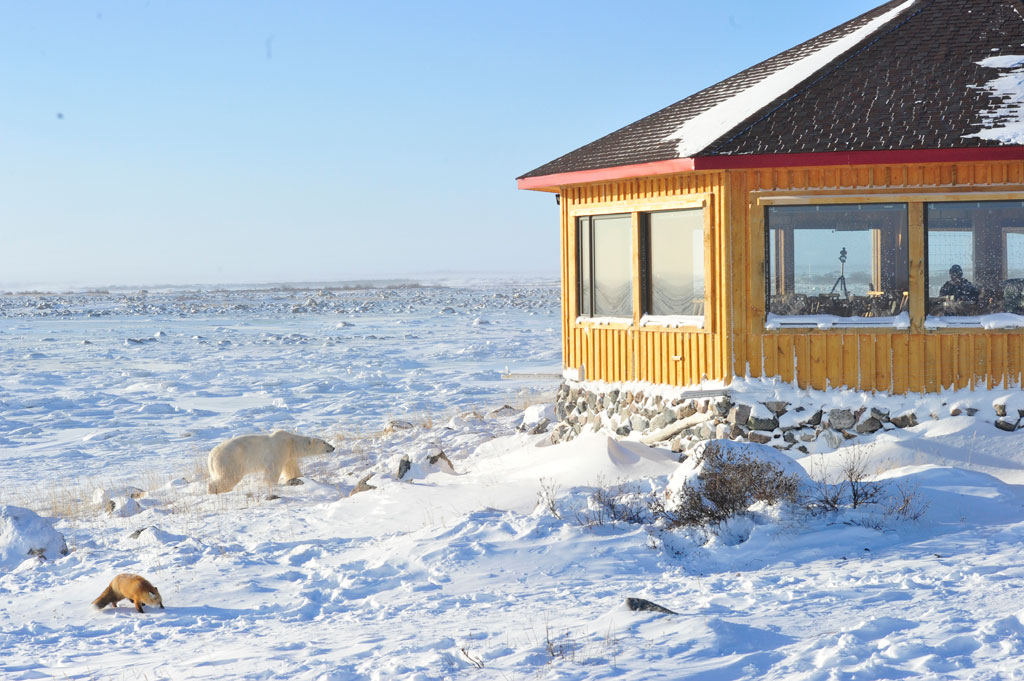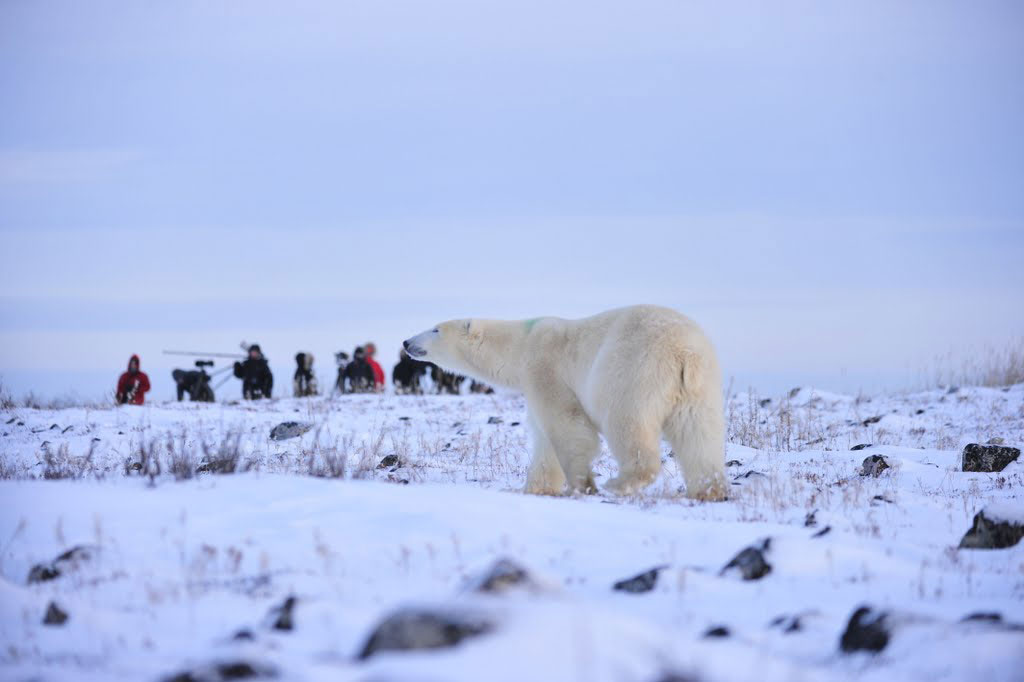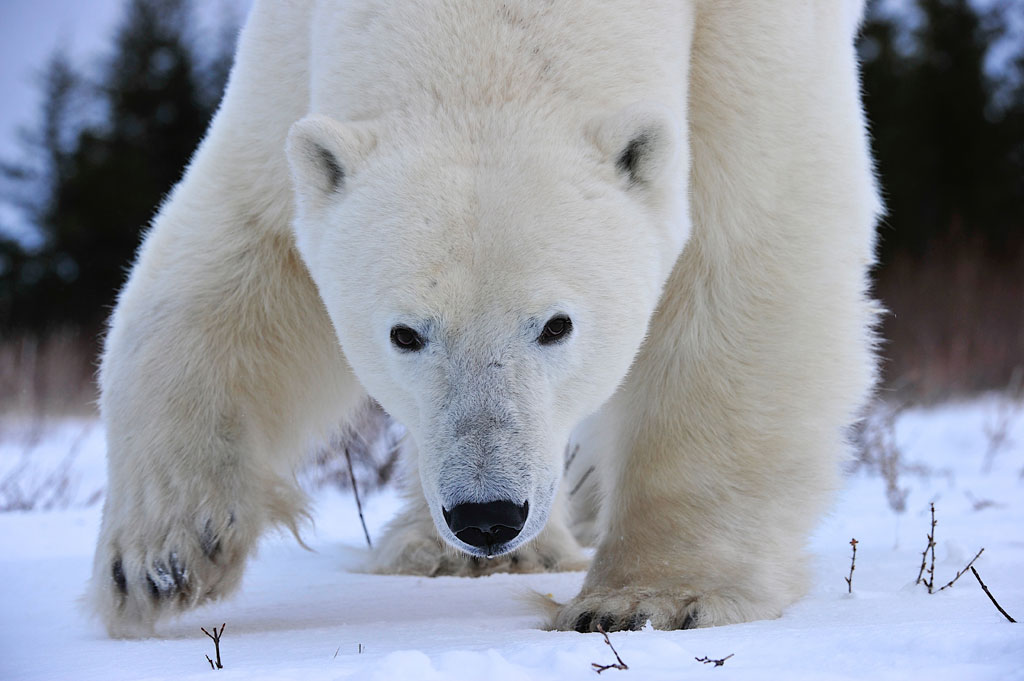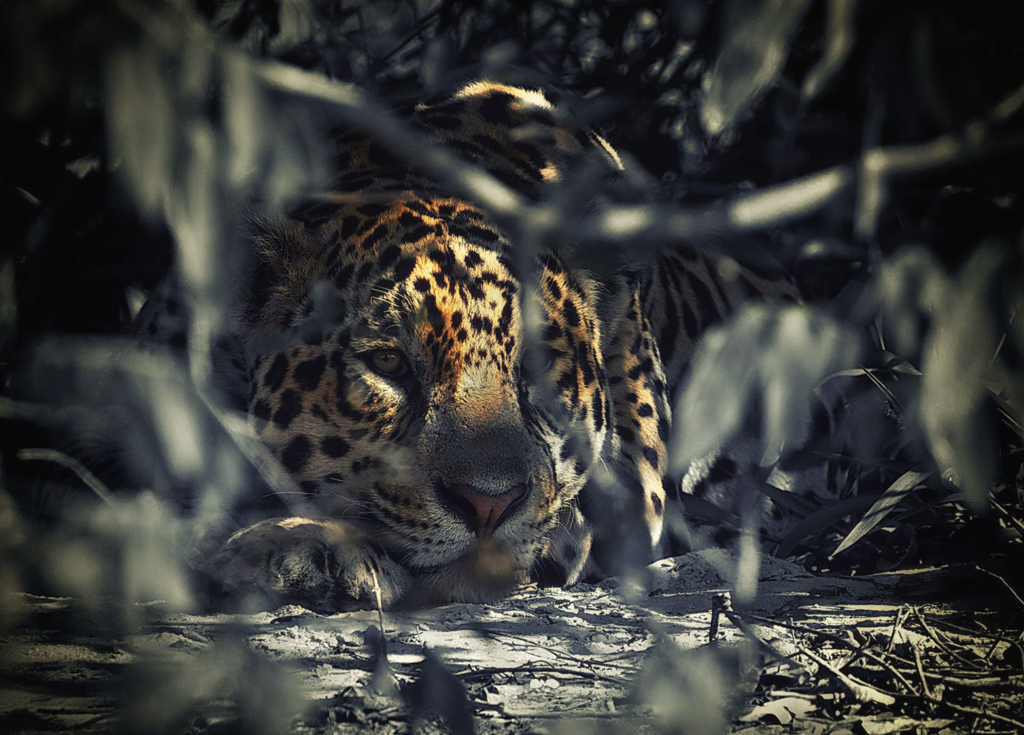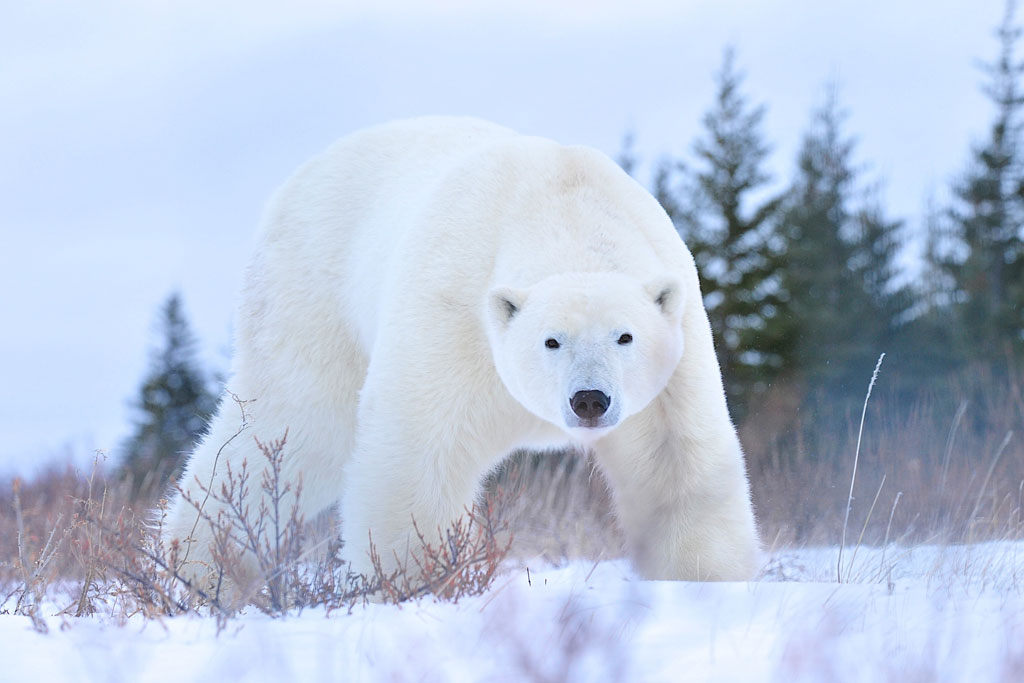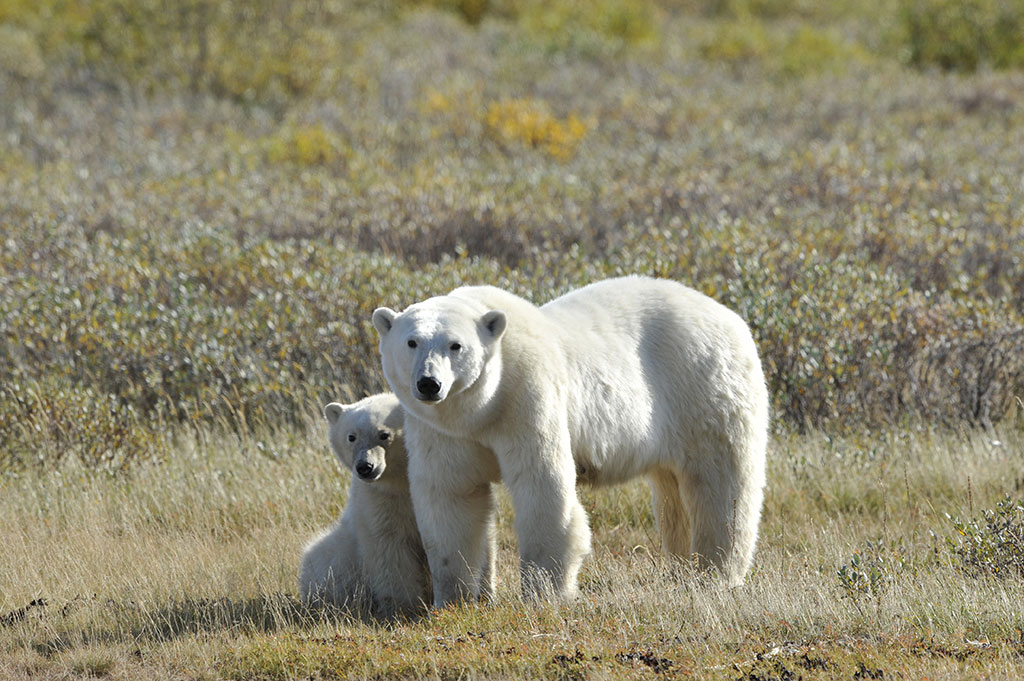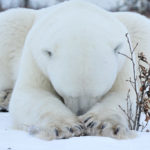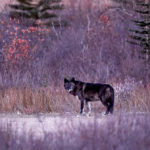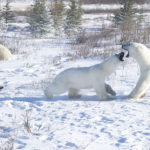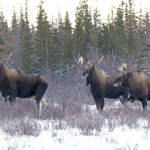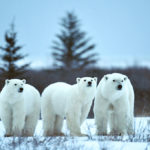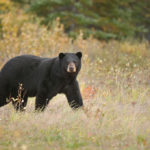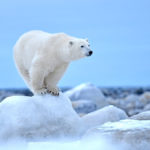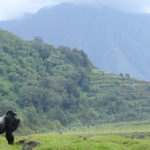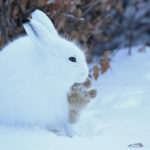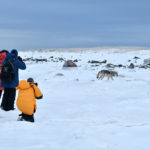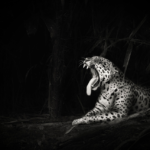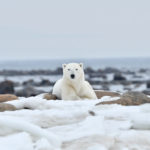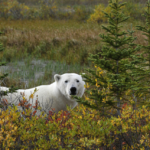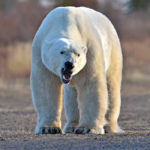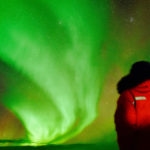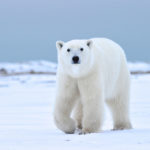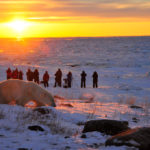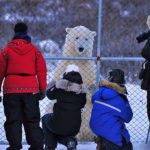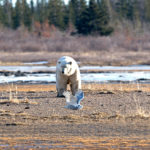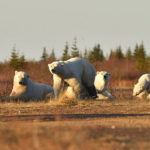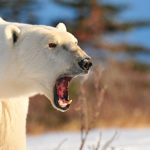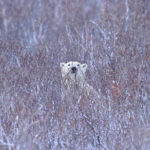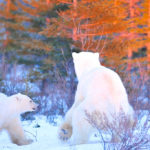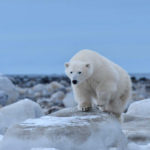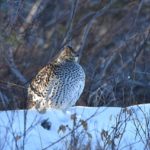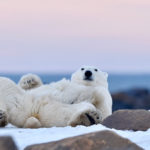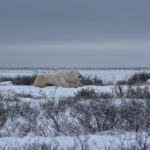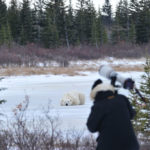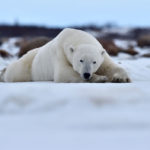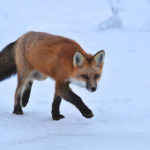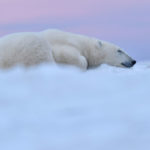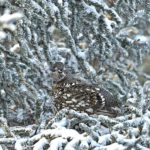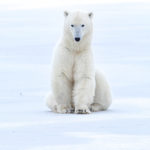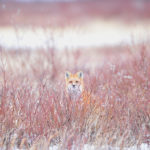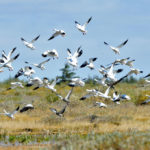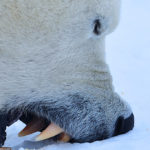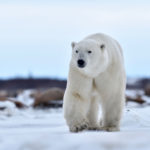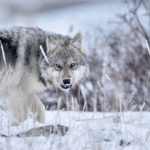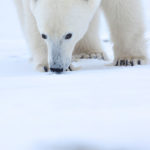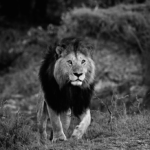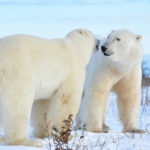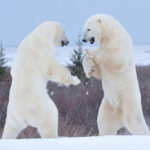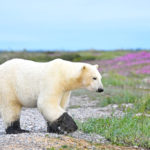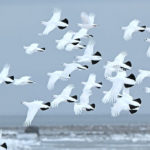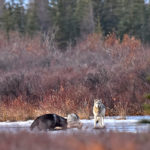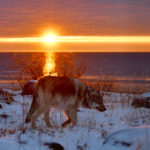Ian Johnson has been walking with polar bears and showcasing the Churchill Wild lodges to his photography clients since 2012. He’ll be back again in the fall of 2019. Word-of-mouth business has been good.
The 52-year-old professional safari guide, photographer and ecotourism consultant has been leading photography tours around the globe through his Ian Johnson Safaris since 2000, focusing on wildlife, culture and landscapes.
Johnson caters to a wide range of clients, from photographers who want to get on the ground and into the bush for the perfect shot, to high-end luxury groups who might just want the pure wildlife experience. Churchill Wild satisfies both requirements.
“I’ve seen polar bears in summer, fall and winter,” said Johnson. “The difference with Churchill Wild is that you can see them in comfort and luxury. You can be out in freezing, very uncomfortable conditions with gusting winds of up to 40 km/h, and then go back to the lodges and be totally at home in a t-shirt and slippers. So even people who are not able to withstand extreme conditions are still able to enjoy the wildlife.
“Churchill Wild has extremely remote wilderness locations on the Hudson Bay coastline where there is nothing else but their lodges. They have fantastic family-oriented hosting and cuisine, and they’re surrounded by the most amazing wildlife.
“It’s an incredible experience to have a polar walk up and past the dining room while you’re busy having breakfast. Or a pack a wolves come running down to the lodge. It feels totally surreal.”
Wild Background, Uncanny Intuition, Helps Guests Get “The Shot”
Born and raised in South Africa, Johnson has spent most of his life with wildlife. As youngster he would spend weekends at the National Zoological Gardens of South Africa, and he started working at safari lodges and camps while still a student. Formally educated as a microbiologist with a National Diploma in Wildlife Conservation, Johnson naturally progressed to becoming a safari and conservation guide,
“I was lucky to work for a company that was pretty widespread,” said Johnson. “They moved me out to East Africa, where I lived in Kenya with my wife and children. I was in charge of group wildlife operations.”
Before starting Ian Johnson Safaris, Johnson was a partner in the EcoTraining Guide School and also had a photography business doing advertising and travel collateral for lodges, camps, hotels and islands. His love of photography began in 1998 with a camera his father gave him while he was working as a safari guide, and he went on to receive several South African and International Awards for his wildlife and natural history photography.
Decades of practical wildlife experience combined with related formal education have provided Johnson with a unique skill set that not only includes guiding, photography, logistics, safety, security and management, but also an uncanny intuition for predicting and anticipating animal behavior and situations.
“The experience is an ace up your sleeve,” said Johnson. “The way bears behave is specific to bears. Big cats also have cues and behavioral ‘tells’ that you can notice and understand when you see them. You act accordingly, with regards to preparing to try and get an exceptional photograph. And a lot of my clients want that. That’s what photographers and wildlife enthusiasts follow me for.
“I get people who are amateur photographers, who are super equipped and super keen. Many of them are not professionals, but they want to travel with me to try get ‘the shot’ and I do my best to help them get it.”
A former finalist in the Natural History Museum’s Wildlife Photographer of the Year competition in the World in our Hands category, Johnson doesn’t enter contests often. “I run out of time to enter,” he said. “I absolutely still take photographs, but I’d rather make sure the guests get in the best positions first.”
Walking Safaris the Way of the Future
Walking safaris in Africa have been the norm for over 30 years, and Johnson has been taking part in them ever since he can remember. There’s a plethora of walking safaris in Zimbabwe and Zambia, and all the national parks in South Africa offer wilderness trails.
“It’s the quest to find wild areas where there are no roads or human footprint,” said Johnson. “To get people back to being with nature. Nobody’s habituating anything, we’re just walking and being part of the wildlife, which continues its daily routine whether you’re there or not. And bear walking safaris have been going on forever.
“Walking safaris are becoming more and more popular, because people don’t want to be sitting in a vehicle. They actually want to be on the ground, seeing all the small things, learning the details and observing everything possible. They want to feel and smell the bush and not be detached.”
Experienced Guides Required
Through his eco-consulting business, Johnson has taught and worked with guides, trackers and wardens throughout Africa, from the forests of Uganda to the Serengeti-Mara ecosystem, along the entire east African coast, to the Okavango Delta and Inyati, the Sabi Sands and the Southern Maputaland Biosphere Reserve.
Like the polar bear walking safaris offered by Churchill Wild, all wildlife walking tours in Africa require specialized guides. If you don’t have a guide you can’t do a walking tour. Johnson’s motivation for training guides is that he fully believes the guides of Africa are one of the most important keys to its survival.
Wildlife walking safari guides in Africa need specific qualifications, and they have to keep a special log book recording their number of wildlife encounters, to prove they are qualified. They also have to have a weapons competency certificate. Churchill Wild’s guides are certified polar bear guides who also have a number of additional qualifications including weapons certification, and their comparative skills impress Johnson.
“I’ve often said to the guides in Africa that they could learn from the behavioral and management techniques used by the Churchill Wild guides,” said Johnson. “From the preventative measures to the protective measures that they carry, which are far more than the South African guides would carry. They would all carry a rifle, but the Canadian guides also carry bangers, screamers, bear spray etc. And then the shotgun or rifle.”
Wildlife Encounters, From Luxury Lodges to Tent Camps and Homestays
While Johnson enjoys the luxury and warmth of the Churchill Wild lodges, some of the locations he visits are very remote and guests will stay in tents or homestays (rooms in the homes of local people.) Seeing wildlife directly from lodges and tent camps does happen in Africa, but it is more common if the accommodations are located on the banks of rivers or near watering holes where the animals come to drink.
“We’ve had so many encounters,” said Johnson. “And I’ve walked down trails into every kind of animal, elephants, buffalo, lions, passed a leopard sitting in the bush. All of these animals have the potential to hurt you and it can be extremely nerve wracking, but it’s also exhilarating. It gives you the feeling that you’re alive.
“Having a large male polar bear walk past nonchalantly while you’re photographing and observing him is one of the best possible wildlife experiences anyone could ever have. That’s certainly happened to me over the years at Churchill Wild and I’m still awed by that, without a doubt. I’ll never ever become blasé about it.
“I always have to just pinch myself when I’m sitting there in front of 1,000-pound polar bear and he’s watching me and observing me, but he’s quite relaxed.”
2019 Wildlife Adventures
Johnson has a full schedule of safaris before he gets back to the Churchill Wild lodges in November. His early-year wildlife adventures will take him to southern India for black panthers and to northern India and the Himalayas in search of the elusive snow leopards. From there he’ll head to the southern Serengeti in Africa for the great wildebeest migration and more predators.
June and August are reserved for mountain gorillas in Africa and from there it’s off the Alaska for three species of bears and bowhead whales. Next comes photographing Orangutans in Borneo in October followed by jaguars in Brazil’s Pantanal. Finally, in November, Johnson will be back to see the polar bears at Seal River Heritage Lodge and Nanuk Polar Bear Lodge, just before they head back out on to the ice for the winter.
Like Father, Like Son
Johnson’s son Temujin was at both Nanuk Polar Bear Lodge and Seal River Heritage Lodge last year, and also took part in the Arctic Safari at Schmok Lake. Already an experienced guide and photographer in South Africa, it appears he will follow in his father’s footsteps.
“He’s very good,” said Johnson. “He was up there learning what I was doing. One day he’ll be leading trips for me. As a photo leader, he also took part in the bear guiding course and passed that. So he may do some backup guiding in the future.”
For All the Right Reasons
Ian Johnson has spent his life exploring some of the world’s wildest areas in Africa, India, Canada, Brazil and the Arctic, photographing tigers, lions, jaguars, black panthers, snow leopards, sloth bears, gorillas, orangutans, crocodiles, wolves, black bears, grizzlies, polar bears and more.
His work is perhaps best summed up on the Natural History Museum website alongside his photo of a silverback mountain gorilla entitled Where is my forest? The description says Johnson “aims to capture images that will inspire people to value the wild places and instill a sense of responsibility for their future.”
Mission accomplished.
Ian Johnson Safaris Photo Gallery
- Ian Johnson photo. Nanuk Polar Bear Lodge.
- Lone wolf at ground level. Seal River.
- Mom and cub on the edge forest at Nanuk. Ian Johnson photo.
- Dancing or sparring?
- Red fox in soft snow.
- A growl to remember.
- Polar bears sparring. Ian Johnson photo.
- Sunset on a wolf.



